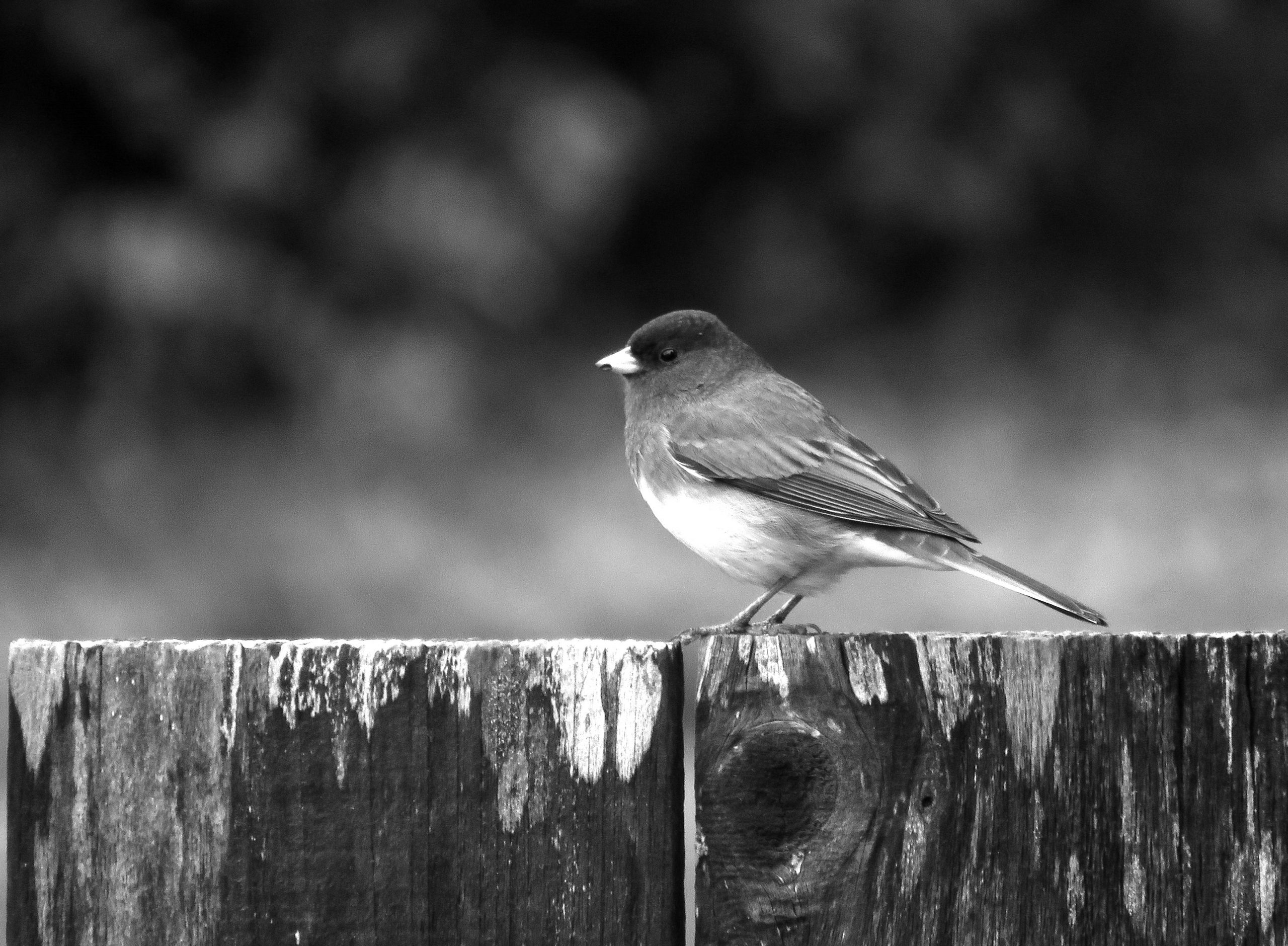Bird of the week: Dark-eyed Junco
About: Small songbird with gray head and back with white belly.With 7 subspecies, Dark-eyed Juncos can be variable, but all have distinctive white outer tail feathers that get flashed when they fly. Some subspecies have brown side/back and sometimes white on wings.
Where to find this bird: Look for this bird in any brushy area on campus, such as Slug Garden or any wooded patch along the river. Also a frequent feeder visitor.
When to find this bird: Mid September – early May.
Fun fact: One of the most widespread winter feeder visitors throughout most of North America, from coastal western Alaska and Southern Canadian interior south to Northern Mexico.

Year listing – why winter birding in Wisconsin SUCKS
The beginning of a new year creates a new opportunity for a new bird list. Birders, including myself, enjoy keeping a year list which resets every year on January first to zero and then try to see as many species as possible in the next 364 days, with varying degrees of obsession. Some birders go all out and chase every single bird in their county, state or country (or if they are going global will fly around the whole world trying to find birds), or they will do it more casually, like myself, and just try to pick up as many species as they can without dropping everything to chase every small rarity that pops up. I find it fun to keep track of how many species I see in my home county, state and, if I end up traveling some, the entire US from year to year as it reflects how much I get out birding.
On January first, I like to join other birders in trying to start my year list off with a bang and see as many species as possible. Usually that means spending all day birding. Last year I hit the Oregon coast with my brother on January first, where we tallied 106 species in about 9 hours. I was particularly determined to see as many west coast birds as I could before I had to return the next day to the cold winter in Wisconsin, where birding is much slower.
Winter birding in Wisconsin is much slower than it is in Oregon because of the cold temperatures that result in lots of snow and frozen water bodies where water birds like to congregate. This means significantly lower numbers of passerines — aka songbirds — and less waterfowl, though they still congregate in giant numbers wherever there is still open water. With the Oregon coast, the bird diversity is only expanded with various species of shorebirds, pelagic birds and sea going ducks found easily.
This year, I decided to stay local and bird within a 20 minutesdrive of my house, where there is a lot of bird diversity. I didn’t find as many species as last year, but managed a good 74 species, all before lunch. I’ll be lucky to see half of that here in Wisconsin this month, but there are some really cool birds that winter around here which I’ll be writing about in the coming weeks. And, with the river still mostly unfrozen, I may even be able to see some stuff I haven’t been able to see in past years. I’ve already noticed some Double-crested Cormorants, which usually are hard to find till March! Looking forward to sharing more birding adventures with you this term!
Oh, and if you’re wondering about how the Christmas Bird Count Season went, it was fantastic — I did a total of 4 different counts and even spotted a Ruff, which is a rare shorebird from Eurasia.

